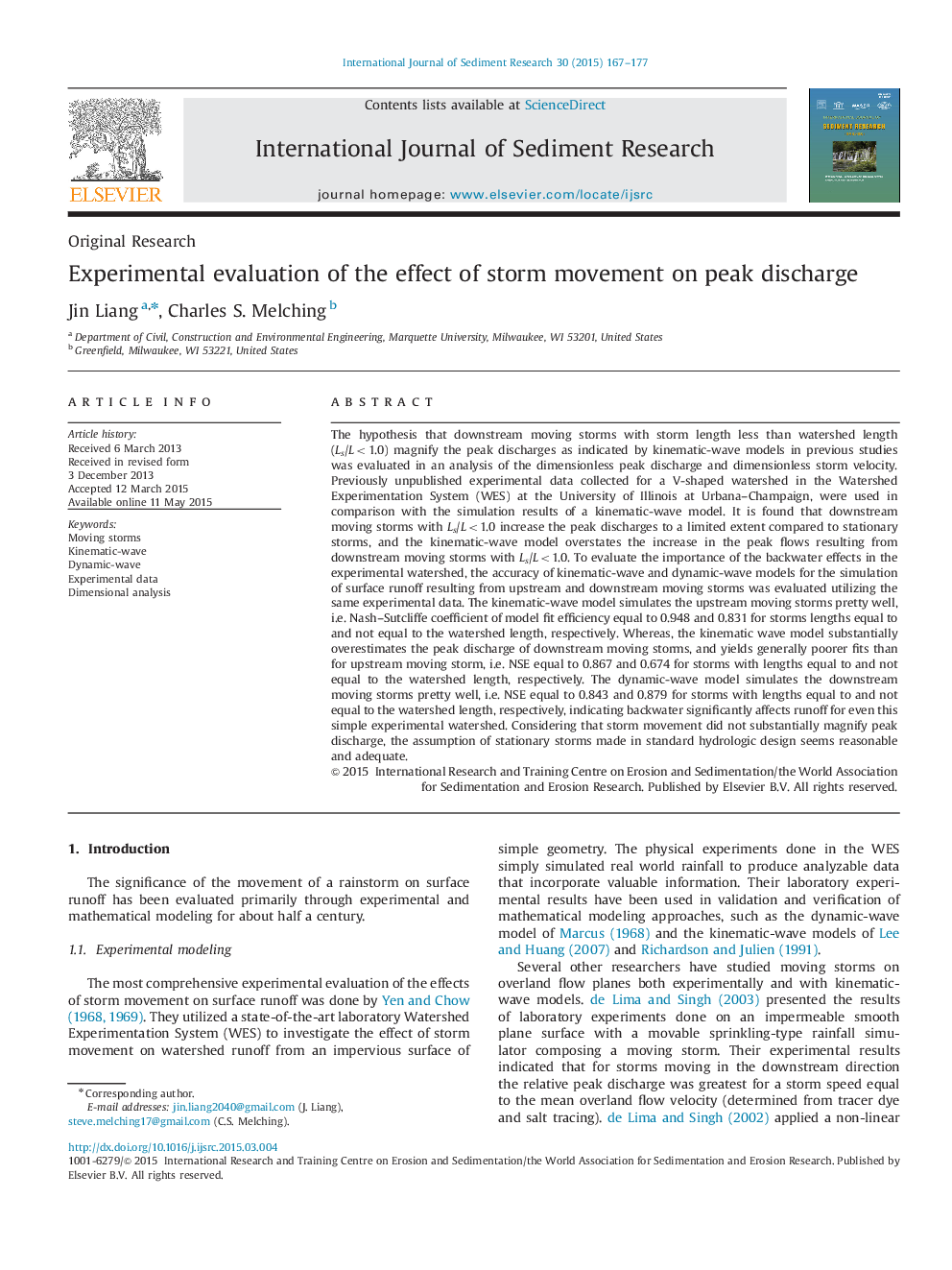| کد مقاله | کد نشریه | سال انتشار | مقاله انگلیسی | نسخه تمام متن |
|---|---|---|---|---|
| 4712759 | 1638101 | 2015 | 11 صفحه PDF | دانلود رایگان |
The hypothesis that downstream moving storms with storm length less than watershed length (Ls/L<1.0) magnify the peak discharges as indicated by kinematic-wave models in previous studies was evaluated in an analysis of the dimensionless peak discharge and dimensionless storm velocity. Previously unpublished experimental data collected for a V-shaped watershed in the Watershed Experimentation System (WES) at the University of Illinois at Urbana–Champaign, were used in comparison with the simulation results of a kinematic-wave model. It is found that downstream moving storms with Ls/L<1.0 increase the peak discharges to a limited extent compared to stationary storms, and the kinematic-wave model overstates the increase in the peak flows resulting from downstream moving storms with Ls/L<1.0. To evaluate the importance of the backwater effects in the experimental watershed, the accuracy of kinematic-wave and dynamic-wave models for the simulation of surface runoff resulting from upstream and downstream moving storms was evaluated utilizing the same experimental data. The kinematic-wave model simulates the upstream moving storms pretty well, i.e. Nash–Sutcliffe coefficient of model fit efficiency equal to 0.948 and 0.831 for storms lengths equal to and not equal to the watershed length, respectively. Whereas, the kinematic wave model substantially overestimates the peak discharge of downstream moving storms, and yields generally poorer fits than for upstream moving storm, i.e. NSE equal to 0.867 and 0.674 for storms with lengths equal to and not equal to the watershed length, respectively. The dynamic-wave model simulates the downstream moving storms pretty well, i.e. NSE equal to 0.843 and 0.879 for storms with lengths equal to and not equal to the watershed length, respectively, indicating backwater significantly affects runoff for even this simple experimental watershed. Considering that storm movement did not substantially magnify peak discharge, the assumption of stationary storms made in standard hydrologic design seems reasonable and adequate.
Journal: International Journal of Sediment Research - Volume 30, Issue 2, June 2015, Pages 167–177
